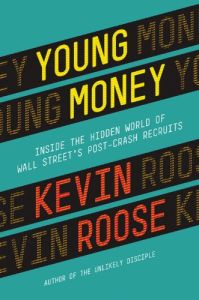Join getAbstract to access the summary!

Join getAbstract to access the summary!
Kevin Roose
Young Money
Inside the Hidden World of Wall Street’s Post-Crash Recruits
Grand Central, 2014
What's inside?
Post-crash college grads who join Wall Street firms may alter the culture of investment banking from the bottom up.
Recommendation
New York magazine business writer Kevin Roose chronicles the lives of eight young Wall Street workers from 2010 to 2013. He changed their names to encourage them to share their honest thoughts and feelings about working for major investment banks. Their true stories feature common threads, notably the long working hours, handsome pay and mixed status of Wall Street analysts. The author also tells a bigger story about Wall Street. Major investment banks, which the public widely views as the primary movers behind the 2008 financial crisis, must change their approach to recruiting top college graduates. For example, the practice of hiring graduates as analysts for a grueling two-year tryout will become less common. Despite – or due to – the main characters’ anonymity, getAbstract recommends these portraits as a revealing look at post-crisis Wall Street.
Summary
About the Author
Kevin Roose is a business and technology writer for New York magazine. He covered Wall Street for the business section of The New York Times and wrote The Unlikely Disciple.


















Comment on this summary